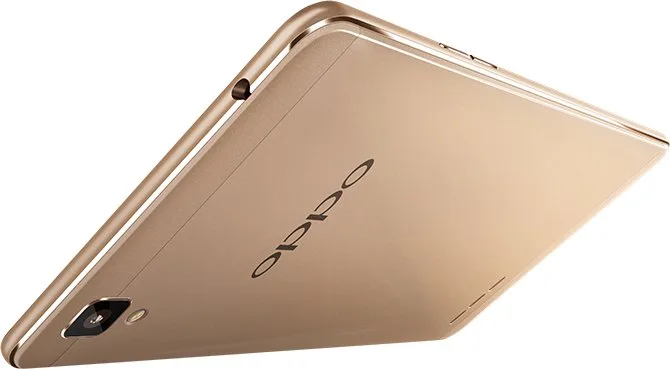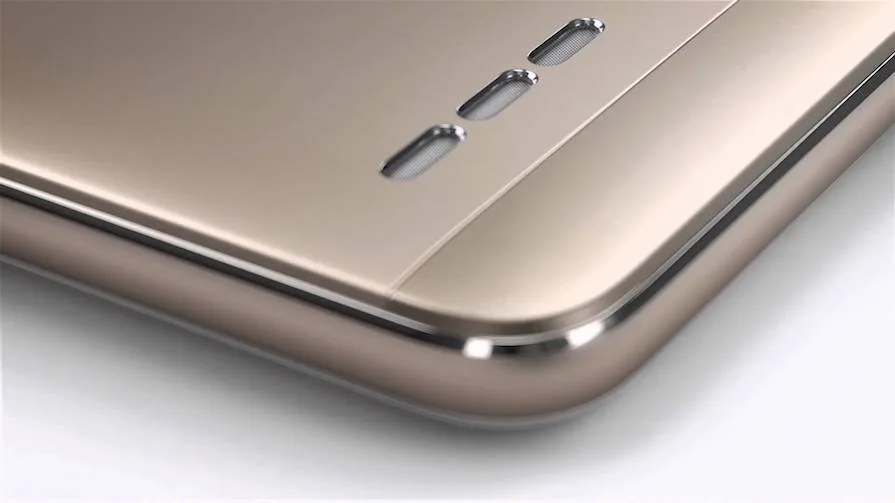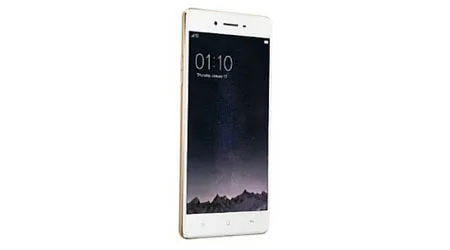 Oppo's F1 is an impressive piece of tech for iPhone expats and mid-range shoppers.
Oppo's F1 is an impressive piece of tech for iPhone expats and mid-range shoppers.
Since the start of 2015, we've reviewed some impressive mid-range handsets, like the Huawei P8 Lite and the Alcatel Idol 3, but at only $299, none compare to the Oppo F1 when it comes to the bang you get for your buck.
Not only do its affectionately imitated iOS touches work, but with its eight-core Snapdragon 616 processor and 3GB of RAM, it's actually packing some heat inside as well as out.
Upsides: Why you’d want the Oppo F1
- iOS inspiration doesn't feel tacky: Oppo's "ColorOS" is unashamedly inspired by iOS. Whether you think this a bit cheeky or not, it actually feels quite unique - a hybrid of iOS and Android that enhances the experience rather than hinders it. This is coming from a longtime iOS fan, although Android vets might miss some staple features, like an app drawer. For the most part, it has a much smoother and aesthetically pleasing UX than other mid-range Android entries.
- Generous asking price: A glance at the comparison table above will show that the F1 undercuts both the Huawei P8 Lite and the Alcatel Idol 3 on price. What you're getting for your money is an all-around better handset. Not only is it a powerful little gadget, but manages to peacock as a premium smartphone.

- Visual trickery gives premium sheen: It's not just the OS that reflects some of Apple's beloved design features. The physical build also mimics the iPhone 6. Aside from the awfully familiar tint of the Rose Gold model, the F1 also has an anodised aluminium rear (which really makes it feel like you're holding a more expensive piece of tech) and through some commendable visual trickery, looks like it has the same curved glass display. Upon closer inspection, it's clear that it's actually the plastic sides that are raised and curved to sit flush with the screen, but running a finger over the join, you wouldn't be able to tell the difference.
- Outperforms its more expensive competitors: Admittedly, the Alcatel Idol 3 has a heavier load to bear with its 1080p display, but still the surprising Snapdragon 616 CPU and 3GB of RAM is quite powerful for a handset with a 720p display. The eight-core 1.7GHZ CPU scored 3083 points in the Geekbench benchmark, which is more impressive than both the Huawei P8 Lite and the Alcatel Idol 3 (which will set you back an extra $80).
| Handset | Geekbench 3 Single Core (higher is better) | Geekbench 3 Multi Core (higher is better) |
|---|---|---|
| Samsung Galaxy S6 Edge+ | 1492 | 4893 |
| Samsung Galaxy S6 Edge | 1324 | 4626 |
| Google Nexus 6P | 1251 | 4597 |
| Samsung Galaxy S6 | 1347 | 4569 |
| Apple iPhone 6S | 2540 | 4410 |
| Apple iPhone 6S Plus | 2491 | 4391 |
| Sony Xperia Z5 | 1358 | 4134 |
| LG G4 | 1190 | 3313 |
| Google Nexus 5X | 1188 | 3198 |
| Oppo F1 | 692 | 3083 |
| Huawei P8 Lite | 582 | 2612 |
| Alcatel OneTouch Idol 3 | 655 | 2461 |
Downsides: Why you might not want the Oppo F1
- Auto-brightness had one job: I had very few gripes with the Oppo F1, so these next few points may seem nitpicky, but they are worth mentioning. The F1's auto-brightness is one of these small annoyances. With auto-brightness switched on under direct sunlight, the screen brightens an insignificant amount and remains dim and near-impossible to read. Through some testing, we found this be a result of auto-brightness only moving the brightness slider a small way either side of the centre. This isn't as much of a problem in low light, but I found myself switching off auto-brightness on day dot and never using it again.
- Custom themes that devalue the F1's premium feel: The pre-selected theme for the F1 is very iOS-like. A starry night sky with thin Helvetica Neue lettering, you know the score. The stock theme compliments the physical design and completes the convincing premium facade. However, dig just past the surface and you'll find a generally horrendous selection of custom skins.
- Poor speaker placement: My colleague pointed out this issue in their review of the R7s and things are no different with the F1. The speaker is inconveniently placed at the bottom of the rear of the handset. The most natural and comfortable ways to hold your handset (in portrait or landscape) often cover the speaker, resulting in muffled audio. The same can be said for whenever you lay the phone flat. This is not a deal breaker and the speaker itself is impressively loud for a mid-range handset.

Who is it best suited for? What are my other options?
For a mid-range handset, we were pretty impressed with the Huawei P8 Lite when we reviewed it in back in January. However, the Oppo F1 trumps the competition in almost every way and also comes at a lower price. While both are respectable options in their own right, the Huawei P8 Lite and Alcatel Idol 3 cast a large net when it comes to demographic, which ultimately gives them a certain degree of tackiness. The Oppo F1 does no such thing and is clearly positioning itself as a low-cost alternative to the sleekest of premium phones.
This selfie-centric handset not only looks the part, but it's also surprisingly powerful, making it the clear choice for Australia's growing number of SIM-only users.
Where can I get it?
Oppo sells all of its handsets through its own local web site if you want the full Oppo F1 experience.
Oppo F1 Specs
| Oppo F1 | Huawei P8 Lite | Alcatel Idol 3 | |
|---|---|---|---|
| Screen size | 5.0in | 5.0in | 5.5in |
| Storage | 16GB | 16GB | 16GB |
| Weight | 134g | 131g | 141g |
| Processor | Snapdragon 616, Quad-core1.7 GHz and quad-core 1.0 GHz | HiSilicon Kirin 620 CPUOcta-core 1.2 GHz | Snapdragon 615 |
| Rear camera | 13MP | 13MP | 13MP |
| Front camera | 8MP | 5MP | 8MP |
| Battery | 2500mAh | 2200mAh | 2910mAh |
| Resolution | 1280x720 | 1280x720 | 1920 x 1080 |
| Display density | 294ppi | 294ppi | 401ppi |
| Price | $299 | $300 | $379 |
If you're happy on the Optus network, you can buy the Oppo F1 even cheaper at $199, but you'll be stuck on Optus network frequencies with a silver handset that only supports a single SIM card.
 Oppo's F1 is an impressive piece of tech for iPhone expats and mid-range shoppers.
Oppo's F1 is an impressive piece of tech for iPhone expats and mid-range shoppers.